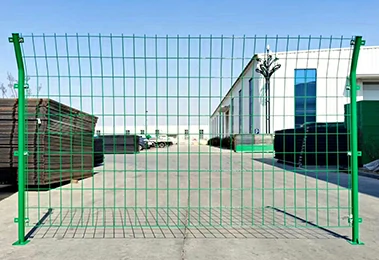 TEL:
+86-13102802206
TEL:
+86-13102802206
 Email:
fencenetting@china.com
Email:
fencenetting@china.com
 Language
Language
 TEL:
+86-13102802206
TEL:
+86-13102802206
 Email:
fencenetting@china.com
Email:
fencenetting@china.com
 Language
Language


Understanding Barbed Wire Fence Prices Factors and Insights
Barbed wire fences are a popular choice for those seeking to secure their property, delineate boundaries, or manage livestock. Known for their ruggedness and effectiveness, these fences serve multiple purposes across agricultural, residential, and commercial settings. However, when it comes to installation, one of the foremost considerations is the price. Understanding the factors that influence barbed wire fence pricing can help you make informed decisions whether you are planning to install a new fence or renovate an existing one.
The Basics of Barbed Wire Fencing
Barbed wire fencing consists of a series of wire strands twisted together, with sharp barbs placed at regular intervals. Initially developed for agricultural use, these fences have evolved into a versatile fencing solution suitable for various applications. Prices can vary significantly based on several factors, including material quality, fence height, wire gauge, and installation costs.
Key Factors Influencing Prices
1. Material Quality The type of materials used in barbed wire construction greatly affects the price. Standard galvanized wire is commonly used due to its good resistance to rust and corrosion, while high-tensile wire provides enhanced strength and durability. Additionally, stainless steel options, while more expensive, offer superior longevity and resistance to environmental conditions. It’s prudent to assess your specific needs to determine the quality necessary for your application.
2. Wire Gauge The wire gauge, which refers to the thickness of the wire, also plays a crucial role in determining cost. A lower gauge number indicates thicker wire, which typically offers more strength and durability but comes at a higher price. For instance, a 12.5-gauge wire could be more expensive than a 14-gauge wire, but the added strength may be worth the investment in areas with larger livestock or harsher weather conditions.
3. Height & Design The height of the fence significantly impacts the overall cost. Standard heights usually range from 3 to 7 feet, with taller fences requiring more materials and thus increasing the cost. Additionally, the number of horizontal strands of wire needed for the design can affect pricing; more strands provide enhanced security but also raise material and installation costs.

4. Installation Costs Labor costs can vary widely based on geographical location, complexity of the terrain, and the company or individual hired for the installation. Some homeowners might opt for DIY installation to save on costs; however, this requires knowledge and experience, as improper installation can lead to additional repairs down the line. Hiring professionals may cost more upfront, but they often guarantee a sturdy and reliable fence.
5. Geographic Location Prices may fluctuate based on regional availability of materials, local demand, and labor costs. Areas with high demand for agricultural fencing may see higher prices than urban areas where barbed wire is less commonly used.
6. Additional Features Many buyers also choose to invest in additional features such as fence posts, gates, and barbed wire accessories. Each of these elements contributes to the overall cost and should be considered when planning your fencing project.
Making an Informed Decision
Before embarking on a barbed wire fencing project, it’s essential to assess your specific needs and budget. Gathering quotes from multiple suppliers and contractors can provide a better understanding of local pricing trends. Additionally, consulting with professionals can yield insights into the most suitable materials and designs based on your property’s unique characteristics.
Conclusion
In conclusion, while the initial price of a barbed wire fence can vary, understanding the factors that influence these costs will help you make an informed decision. By taking into account the quality of materials, wire gauge, height, installation costs, and additional features, you can create a secure and effective fencing solution tailored to your needs. Investing in a quality barbed wire fence ensures not only safety and boundary delineation but also adds value to your property in the long run.